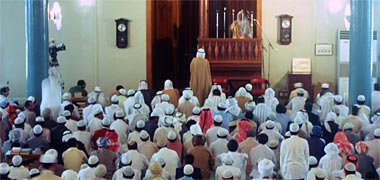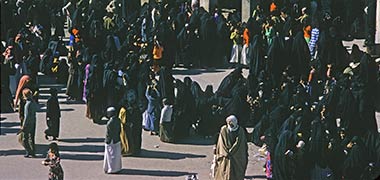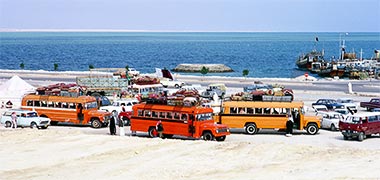
a collection of notes on areas of personal interest
- Introduction
- Arabic / Islamic design
- Arabic / Islamic geometry 01
- Arabic / Islamic geometry 02
- Arabic / Islamic geometry 03
- Arabic / Islamic geometry 04
- Islamic architecture
- Islamic urban design 01
- Islamic urban design 02
- Islamic urban design 03
- Islamic urban design 04
- Islamic urban design 05
- Arabic / Islamic gardens
- Gulf architecture 01
- Gulf architecture 02
- Gulf architecture 03
- Gulf architecture 04
- Gulf architecture 05
- Gulf architecture 06
- Gulf architecture 07
- Gulf architecture 08
- Infrastructure development
- The building industry
- Environmental control
- Perception
- The household on its lot
- A new approach – conceptual
- A new approach – principles
- A new approach – details
- Al Salata al jadida
- Public housing
- Expatriate housing study
- Apartment housing
- Pressures for change
- The State’s administration
- Society 01
- Society 02
- Society 03
- Society 04
- Society 05
- Society 06
- History of the peninsula
- Geography
- Planning 01
- Planning 02
- Population
- Traditional boats
- Boat types
- Old Qatar 01
- Old Qatar 02
- Security
- Protection
- Design brief
- Design elements
- Building regulations
- Glossary
- Glossary addendum
- References
- References addendum
- Links to other sites
Additional background to these notes

There may be a considerable amount of information not given in these notes which would be useful to those with an interest in this subject. It is difficult to know what to add or leave out, but it might be of benefit to set out here some basic information regarding the religious background of the area. In addition there is a small amount of information relating to areas which may not have been covered in the references or glossaries that form some of the pages of these notes.
What is placed here is not intended to be in any way exhaustive. Should further explanation be required, there are many sources which can be looked at either online or in books and elsewhere.
Obligations
There are five obligations for a Muslim. He or she must
- recite the shahada – the statement of belief in God,
- pray to God five times a day,
- fast for the holy month of Ramadhan,
- give zakaat, or alms to the poor, and
- make the pilgrimage to Mecca at least once in his or her lifetime
Prayers
The importance of prayers in the Muslim’s world can not be overestimated. A Muslim must pray five times a day, preferably congregationally, in a local mosque unless he or she has a good reason not to.
The prayers are led by an Imam facing the direction indicated by the qibla – the prescribed direction of the ka’ba at Mecca in Saudi Arabia. Notice of the prayers, adhan, is given from the mosque immediately prior to the time for the prayers and is a familiar sound in Muslim countries.
Prayers, in their formal sense given below, together with more informal expressions to Allah, are common as Muslims go about their daily tasks. For instance, very few initiatives are begun without a quick recitation of ‘In the name of Allah, the Compassionate, the Merciful’ – the phrase which begins every verse of the Holy Quran but one.
The timing of prayers is governed by the lunar calendar and the movements of the sun. Prayers are:
- early morning prayer – salat al-fajr
- which can be offered over a total period of about two hours beginning about an hour before dawn when the first glimmerings of dawn appear, and is generally considered pre-dawn prayers;
- mid-day prayer – salat al-dhuhr
- which is offered after work for the day has begun and is particularly aimed at seeking Allah’s guidance, prayers preferably made in conjuction with others at prayer. It begins from the time the sun begins to decline from its zenith to mid-way to its setting;
- mid-afternoon prayer – salat al-asr
- which is taken as a break from work to remember Allah. It runs from directly after the al-dthur prayers to sunset;
- sunset prayer – salat al-maghrib
- which is taken directly after sunset, as the day moves to its end, and extends until the glow of the sun disappears from the horizon; and the
- evening prayer – salat al-isha
- which last from the end of the al-maghrib prayer to the salat al-fajr.
Friday is the holy day for Muslims. It is the day that there is an increased need if not requirement for communal prayer, and salat al-dthuris the time which seems to be the most important communal event of that day.
As mentioned above there are certain conditions under which a Muslim does not have to pray, generally these are related to sickness, pregnancy and travel when the al-dthur and al-asr as well as the al-maghrib and al-isha which may be taken together.
The purpose of the prayers is to join a Muslim to Allah throughout the day, linking the social and religious aspects of life and asserting the continuity there is in this relationship.
The practice of praying together strengthens the social bonds of the local community. Once a week, on Fridays, all work ceases and the people of the larger community meet together to pray at the central mosque. This draws together the whole town and affords the opportunity for all citizens to come in contact with each other.
At Eid, twice a year, prayers are said outside the town in a large area enabling both the townspeople and those from the neighbouring communities to come together in prayer. It is strongly believed that regular, congregational worship promotes social relations in an atmosphere of equality and love, and is a crucial device for purifying and unifying the human race.
The prayers are performed facing the direction of the qibla in Mecca, and the Muslim goes through a sequence of prayers standing, bowing and kneeling. There is nearly always a prayer mat kept for individuals to use in prayer, and often the direction of Mecca is marked within the area used for prayer.
Prayers are not always given in the mosque and individuals are free to worship at home: in fact, the women of the house normally worship at home where they have the additional responsibility of instructing their children in prayer from an early age. When more than one person prays within a house they generally line up, shoulder to shoulder, in a suitably large space facing the qibla with, sometimes, a single person in front to lead the prayer.
There are a large number of resources on the Internet and elsewhere which I recommend you read to obtain a better understanding of the importance of prayer in the daily life of the Muslim. As you will see in the notes I’ve made in these pages, this relationship is central to the organisation of the Islamic house and planning.
wudhuw’
Muslims carry out a ritual ablution, wudhuw’, before praying as required by Sura 9 of the Quran.
When ye rise up to prayer, wash your faces and your hands and arms to the elbows, and wipe your heads and your feet to the ankles.
Before praying, whether in private or public, all Muslims wash themselves as they are required to be clean for prayer, this form of prayer being demonstrated to them by Muhammad at Mecca and Medina. First washed are the hands, then the mouth, nose, face, the arms – first the right and then the left – up to the elbow, and then the hair is wetted. When that is finished the feet are washed – again the right and then the left – up to the ankles.
When suitably clean water is not available it is permissible to use dust, sand or stone or a clean, dry material in order to carry out the necessary ritual cleansing procedure. This is known as tayammum and is carried out in a similar manner to that using water, the hands being placed on the sand or stone, rubbed together to remove any loose material, and then the process of moving the hands over the arms and feet followed in a specific manner as noted above.
Fasting
Muslims fast during the Holy month of Ramadhan, the ninth month of the Islamic year. Complete abstinence from food and drink during daylight hours is required during this month. The purpose of fasting is to remind Muslims of their sympathy for the needy and the poor, to teach restraint from excesses of food and drink, and to curb the more animal side of man for which additional prayers are prescribed to bring him nearer to God by abstemption from evil deeds and desires.
Alms giving

The practice of alms giving – zakaat – was established as setting apart one fortieth of a Muslim’s annual savings in money or kind. zakaat was then used to benefit the poor and needy, employees, slaves, debtors, those who struggle in the cause of God, strangers stranded on their way and anybody having a claim to charity. It is not considered as a tax but rather as a loan to God which He will repay many times over.
Pilgrimage

It is the duty of every Muslim to travel to Mecca once in his life – provided that he has the means to do so – and this is preferably accomplished on an important occasion such as one of the Eids. The main Eid – Eid Al Adha or Eid Al Kabir – is that which is preferred for the major pilgrimage, and a minor pilgrimage is performed preferably during the Eid Al Fitr.
The ceremonies are actually carried out between the seventh and tenth days of the month of Dhul Hejja and consist of:
- a circuit around the ka’ba in Mecca,
- running between the two small hills of Safa and Marwa,
- assembling on the ninth day at the hill of Arafat twelve miles to the east of Mecca, and
- offering sacrifices at Mina on the way back to Mecca.
For these activities all Muslims dress in two unsewn white sheets to signify that they are all created equal in the eyes of God, and must abstain from luxuries and gratification of the senses. During this period they are required to indulge in prayer, the praise of God, and self-examination. It can be noticed that, in the periods immediately before and after the Eids, the practical outlook of Muslims towards Islam are reinforced, and this is particularly so with those who make the pilgrimage to Mecca.
Islamic calendar
The Muslim calendar comprises twelve, lunar months:
- muharram
- safar
- rabi’ al-awwal
- rabi’ al-thani
- jamaadi al-awwal
- jamaadi al-thani
- rajab
- sha’baan
- ramadhan
- shawwaal
- dthuw al-qa’dah
- dthuw al-hijjah
The 1st Muharram 1 AH corresponds with the 16th July 622 AD and is the date of the Prophet’s hijra from Mecca to Yathrib which, later, became known as Medina.
At the end of the holy month of Ramadhan there is the holiday of Eid Al Fitr which falls on the 1st Shawwal, and this is followed approximately seventy days later by the Eid Al Adha which is celebrated on the 10th Dhul hajja.
Because the months are lunar, the Islamic year is approximately eleven days shorter than the Gregorian calendar used in the West. The significance of this is that the seasons enjoyed in the West are not reflected in the Islamic year – each of the Islamic months will fall within a Gregorian season approximately once every thirty-three years. All the months and, notably, Ramadthan – the month of fasting during daylight hours – will fall within the long, hot summer months between two and three times during the average person’s lifetime, and a similar number during the shorter, cold winter months.
The beginning of the Islamic month is not properly understood by some Western observers. Although Arabic astronomy was expert long before the West, and the calculations for lunar risings can be accurately calculated, in accordance with fiqh tradition, the beginning of a lunar month depends essentially on physical factors, particularly the actual sighting of the moon. Hence the difficulty in establishing an Islamic calendar which is accurate around the Islamic world.
Islamic/Gregorian calendar conversion
There are a number of resources on the Internet such as this and this which enable dates to be converted between Gregorian and Islamic calendars. Be aware that these are usually approximations and that there may be a day’s discrepancy between them due to the manner in which they are programmed to make the calculations.
Measurement

I should like to add a note on measurements. Today measurements in the Gulf are made using the Imperial or Metric systems. Where countries have a strong north American influence it is still common for measuring to be in feet and inches, however many countries have adopted the Metric system, influenced by their links with Europe which uses the Metric system. The use of Letter or A4 paper sizes is where the system chosen can usually first be spotted on a site, but specification of materials can be quite complex with inconsistencies between items created by the coexistence of both systems.
Feet and inches was used as measurement in Qatar for some time. The qadm and busa were the customary method of measuring until the European standards based on metric systems were introduced. However the old Imperial system continued and, to some extent, still does with the older generations reinforced by the new north American influences in the region.
Historically, the common unit of measurement was the cubit, a unit which has been in use for thousands of years. The reason for mentioning the cubit here is that it was specified by the Prophet and it is, therefore, important to know it’s size in relation to historical building.
The length of the cubit varies slightly due to a number of factors, mostly to do with the accuracy of standardisation and the large area within which the cubit was used. At it’s simplest, and depending upon which source you take, the cubit can be said to vary from approximately 450mm to 543mm. The lower figure of 450mm is given by Hakim and, perhaps, relates only to measurement in Tunisia. In Mesepotamia the cubit varied between 522mm and 532mm and, in Persia, between 520mm and 543mm.
The ‘standard’ cubit was determined in Egypt to be six (hand) palm widths. But there was also a ‘royal’ cubit of seven palm widths and the relationship between them is considered important. For the purposes of my work here, the royal cubit may be ignored.
Abbreviations
References | top | Links
Search the Islamic design study pages
- Introduction
- Arabic / Islamic design
- Arabic / Islamic geometry 01
- Arabic / Islamic geometry 02
- Arabic / Islamic geometry 03
- Arabic / Islamic geometry 04
- Islamic architecture
- Islamic urban design 01
- Islamic urban design 02
- Islamic urban design 03
- Islamic urban design 04
- Islamic urban design 05
- Arabic / Islamic gardens
- Gulf architecture 01
- Gulf architecture 02
- Gulf architecture 03
- Gulf architecture 04
- Gulf architecture 05
- Gulf architecture 06
- Gulf architecture 07
- Gulf architecture 08
- Infrastructure development
- The building industry
- Environmental control
- Perception
- The household on its lot
- A new approach – conceptual
- A new approach – principles
- A new approach – details
- Al Salata al jadida
- Public housing
- Expatriate housing study
- Apartment housing
- Pressures for change
- The State’s administration
- Society 01
- Society 02
- Society 03
- Society 04
- Society 05
- Society 06
- History of the peninsula
- Geography
- Planning 01
- Planning 02
- Population
- Traditional boats
- Boat types
- Old Qatar 01
- Old Qatar 02
- Security
- Protection
- Design brief
- Design elements
- Building regulations
- Glossary
- Glossary addendum
- References
- References addendum
- Links to other sites